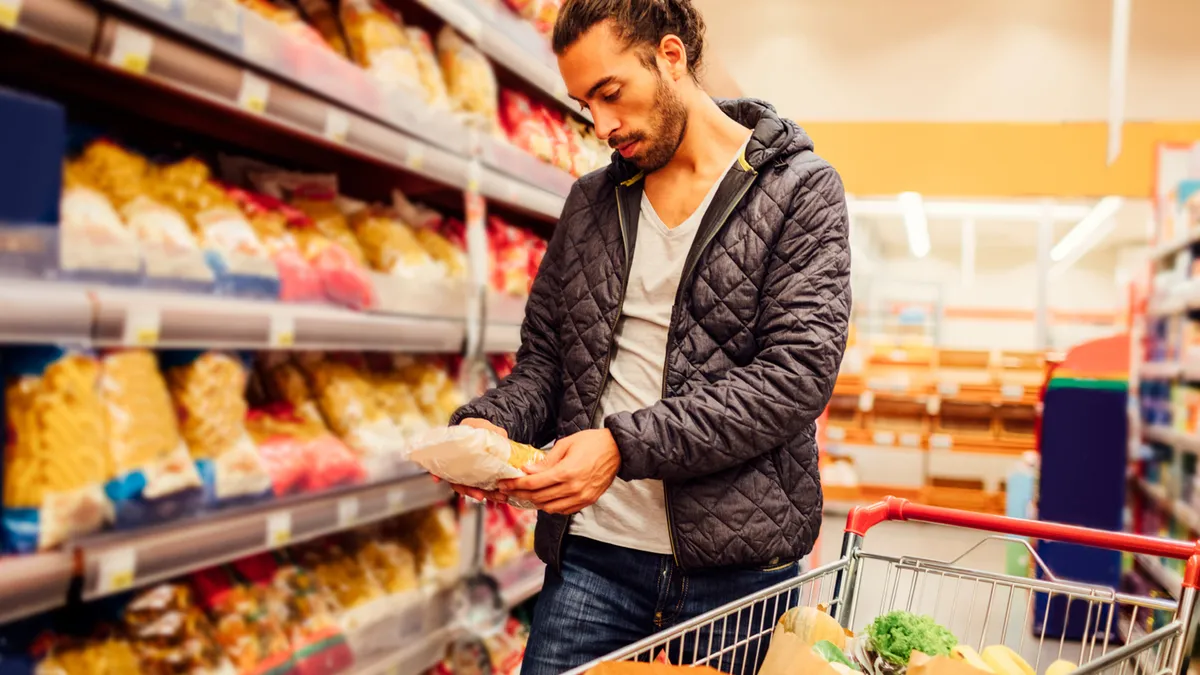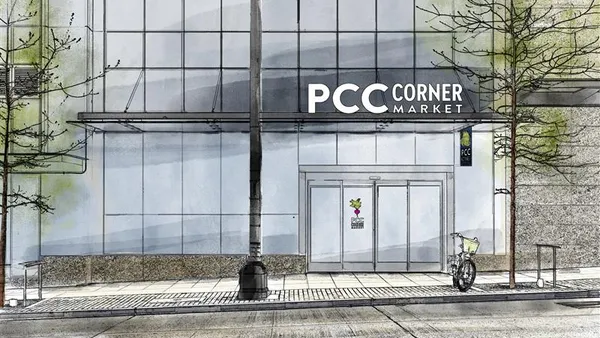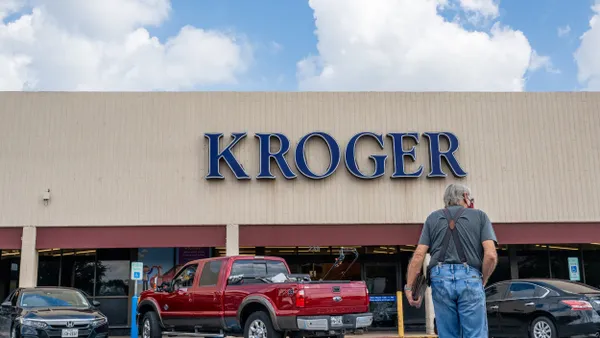Dive Brief:
- Placer.ai found that grocery store visits at the 12 top U.S. grocers declined 19.7% in April but improved in May, with visits down 10.1% year over year.
- February and March saw fairly normal levels of in-store foot traffic but by April, state and store restrictions came in full force and millions of consumers shifted their shopping online.
- Wegmans, Trader Joe’s and Whole Foods struggled the most, according to Placer's data, with year-over-year traffic down 33.8%, 44.1% and 52.4%, respectively. Each chain saw improvement in May, with Trader Joe's traffic up around 20% and Whole Foods improving around 12%.
Dive Insight:
The boost in store foot traffic that grocers saw in May compared to April could stem from looser government regulations as well as cabin fever among consumers. In May, many states and cities began allowing non-essential businesses to open like restaurants for dine-in, hair salons and gyms — all signs of a cautious return to normal even as the virus continues to spread.
Customers may also be warming up to the safety precautions implemented by stores that may have made them uneasy at first, like plexiglass shields, mask requirements and extra cleaning procedures. Longer store hours at most major chains in May may have contributed to the boost as well.
Costco, which relies heavily on store traffic and doesn’t have a sizable online presence, posted its first monthly sales growth decline in more than a decade in April. The retailer said social distancing restrictions, stay-at-home orders and temporary closures of some of its stores led to decreased traffic and sales. Costco posted stronger sales in May, with growth up 7.5% to $13 billion.
After an initial round of in-store stock-up shopping in March, consumers turned to online grocery in April — many for the first time. Grocers at first struggled to meet demand in a timely fashion, but improved as they added more workers and refined their operational systems. Online sales eclipsed $5 billion in April and have continued to rise even as store traffic has improved, with sales reaching $6.6 billion in May, according to Brick Meets Click.
Placer's data shows fluctuations in store visits that could indicate a reluctance to shop around formerly busy holidays. Publix saw a 7.4% increase of in-store visits across all its stores on May 9 year-over-year but just two weeks later on the Saturday before Memorial Day, the retailer’s store visits declined 10%.
Similarly, on May 9 Albertsons’ store visits were up 29% but were down the Saturday before Memorial Day by 3.4%. Placer noted in its blog post that these fluctuations could be due to a number of different reasons, including an "aversion to major shopping days." With many consumers working from home or out of work, shopping is now spread more evenly across the week rather than concentrated on weeknights, weekends and holidays.
The bounce back in store traffic grocers are seeing could be temporary. A new analysis by the Associated Press found that as states and cities roll back restrictions and reopen businesses, coronavirus cases have risen in 21 states, particularly in the South and West. A second surge in cases could reignite stay-at-home orders and the closures of non-essential businesses, pushing store traffic patterns back in line with what they experienced in April.













